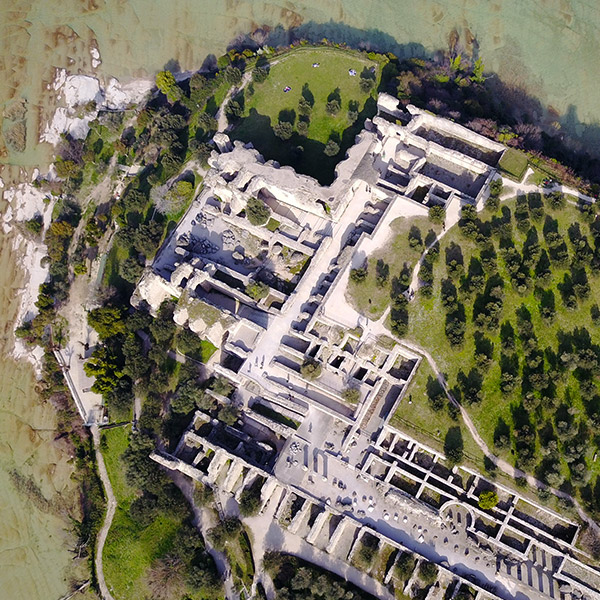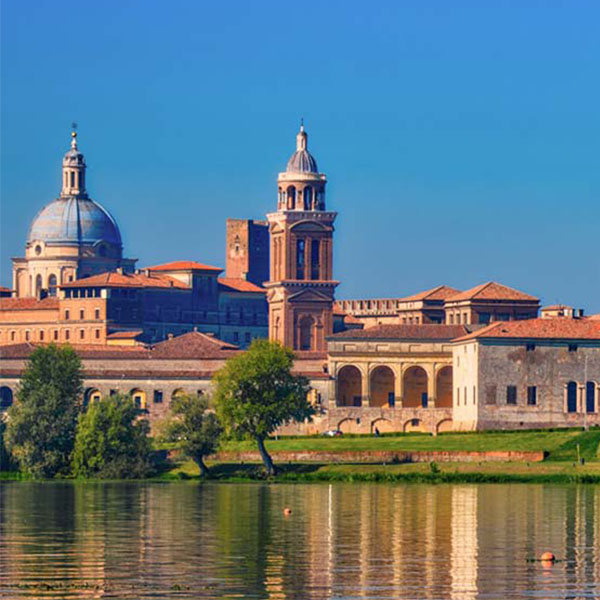Surroundings
Lake Garda tour
The blue of the lake, the green of the vineyards, a nature to admire ... Lake Garda needs no introduction ... You will immerse yourself in the various towns to discover small and not so small places, with their castles, their marinas ... you will spend a memorable day!
The tour of Verona
The route starts from one of the monumental gates that delimit the city: PORTA SAN ZENO. From here we continue to the Basilica of San Zeno with a visit to its interior (Romanesque church, developed on three levels, houses a masterpiece by Andrea Mantegna: "the altarpiece of San Zeno"). Then we arrive at Castelvecchio, an imposing civil building from the Veronese Middle Ages. Inside there is one of the most important Italian museums, which can be visited on request.
On the right side of Castelvecchio, in a small green area overlooking the Adige, it will be possible to admire the Arco dei Gavi: construction of the 1st century AD. Continue to Porta Borsari, once a building with a central courtyard with double passages in the facades, of which today only the external facade in local white limestone remains. Arriving in Piazza Duomo, with a visit to the Basilica and a breathtaking view offered by the turrets, you can see the Sanctuary of Our Lord of Lourdes (whose titular and main feast is 11 February, the anniversary of the first apparition of Our Lady of Lourdes).
The visit continues by admiring the only Roman bridge left in the city: the Ponte di Pietra, whose construction can be placed in the pre-Augustan era. From here you arrive at the Basilica of Sant'Anastasia: the largest Veronese church and the most important Gothic monument in the city. After the visit we continue to Piazza Erbe. From here, on foot, you can reach Piazza dei Signori with the Scaligere Arche and the Old Market Courtyard with the Scala della Ragione. Continue to the Torre dei Lamberti admiring the panorama below. Could not miss a visit to the balcony of Romeo and Juliet, the famous protagonist of Shakespeare's tragedy. Between Piazza delle Erbe and Piazza Brà, we find Via Mazzini: a long and narrow street that connects the two squares. This course is dedicated to the most unbridled Shopping ... we will wait for you in Piazza Brà where we will end our tour with a visit to Juliet's tomb.


The tour of Mantua
Passing by Ponte Visconteo, an extraordinary fortified dam built in 1393 in Valeggio sul Mincio, we admire one of the most beautiful villages in Italy: Borghetto sul Mincio. From here we arrive in Mantua with a visit of about an hour to Palazzo Te. Palazzo Te, now home to the Civic Museum, was built between 1525 and 1535 by Giulio Romano at the behest of Federico Gonzaga. The imposing villa was intended for parties, receptions and entertainment for the Duke of Mantua.
We will then pass by the Casa del Mantegna (ancient residence of the painter Andrea Mantegna, a building of great artistic and historical value dating back to 1476) to arrive in Piazza Sordello where we will visit the Palazzo Ducale, the main residence of the Gonzagas, for about an hour. After admiring the Duomo, also located in Piazza Sordello, we continue on foot in Piazza delle Erbe where we will visit the Basilica of S. Andrea and the Rotonda di San Lorenzo, a church articulated on a central circular plan, built in the 11th century.
Stop for "sbrisolona" tasting: typical Mantuan dessert. The sbrisolona cake was born as a poor dessert, of peasant origin. It is a hard, crumbly cake and very rich in decidedly caloric ingredients! Last stop: visit to the Nuvolari Museum, inaugurated in 1985 on the basis of a precise testamentary disposition of the pilot Tazio Nuvolari.
The Sabbioneta tour
f you want you can link this excursion with the tour of Mantua but… you will have to dedicate a whole day to it! In 2008 the city of Sabbioneta was declared a UNESCO World Heritage Site with Mantua.
Padua and Vicenza places of faith
The spread of Christianity in the Padua area is testified by the immense architectural - religious heritage consisting of churches, chapels, sacred places, monasteries and abbeys present throughout the territory. We propose a visit to Prato della Valle where, according to tradition, in 304, Justina, a Roman aristocrat, was martyred by the sword. A basilica and a chapel were erected in his honor on the site of the tomb.
We will stop at the Basilica of S. Antonio, a great sanctuary, visited every year by millions of faithful from all over the world. On our return we will stop at the Madonna delle Grazie impossible located on Monte Berico, a small hill that dominates and overlooks the city of Vicenza. Its origins date back to a period of particular suffering for the city, struck between 1425 and 1428 by a very serious plague epidemic. It happened that the Virgin made a first appearance on the mountain asking a peasant woman to build a church dedicated to her in that place with the promise that the plague would end ... and so it was.

